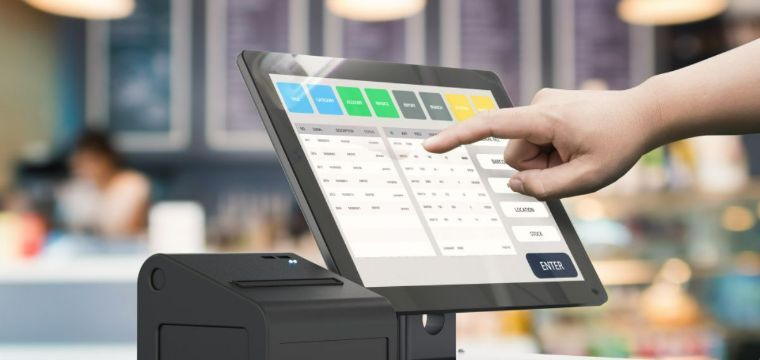What are the benefits of integrating online-to-offline transactions in business?
- Saves time in business operations.
- Allows for smooth and real-time data transfer.
- Offers a better customer experience
- Provides access to comprehensive data
- Increases business’s scalability
Overview:
Online-to-offline (O2O) transactions in restaurants increase productivity and client satisfaction while providing a wealth of customer information. They streamline manual activities, automate ordering procedures, and give real-time updates for better decision-making. O2O transactions can spark engaging dining experiences, keep customers interested, and promote great brand recommendations. Strategically, they provide restaurants with access to extensive data on consumer behavior and preferences, enabling them to base their menu decisions on critical consumer feedback. Restaurants may target a wide range of customers and handle high transaction volumes by expanding their digital reach without investing in expensive physical infrastructure upgrades.
In the rapidly evolving digital era, the synthesis of online-to-offline (O2O) transactions has become an indispensable aspect notably within the restaurant sector. O2O transactions act as a liaison between virtual and real-world interfaces, streamlining consumer engagement and enhancing operational efficiency.
To illustrate, this article will dive into the benefits of online-to-offline-customer integration in the restaurant industry. We will outline how they bolster operational management, amplify customer satisfaction, and promote the food and beverage industry’s agility.
What are online-to-offline transactions in restaurants?
Online-to-offline transactions refer to digitally mediated interactions between diners and restaurants that result in physical, offline experiences. This includes digital payment methods, online table reservations, contactless QR ordering, and online ordering through e-commerce websites or apps. Restaurants can improve their functioning dynamics and clientele by merging digital creativity with traditional physical offerings.
Saves Time in Business Operations
Implementing O2O transactions streamlines many aspects of restaurant protocol and results in substantial time savings. Customers can remotely input their orders using online ordering systems. This may reduce the volume of phone calls and manual order entries. By eliminating unnecessary staff time and reducing order mistakes, this automation fosters greater accuracy and improves customer happiness.
Allows for Smooth and Real-time Data Transfer

Data may transfer between web interfaces and the restaurant’s internal systems with ease as a result of O2O enabled systems. Instantaneous data updates enable management staff to monitor sales, track inventory levels, and understand client preferences. This data-driven strategy equips companies to make well-informed decisions, improve supply chain management, and tailor their products to meet customer requests.
Offers a Better Customer Experience
A cohesive O2O approach enhances the customer experience by introducing ease and customization. Customers can browse menus online via their mobile phones, place food orders, and reserve tables at home, on the go, or even in-store without waiting for a server. Moreover, data-driven loyalty programs and tailored incentives encourage greater client involvement and loyalty, resulting in repeat business and positive brand recommendations.
This is what you can expect when collaborating with premier restaurant management systems in the Philippines. In a competitive culinary landscape with new establishments popping up, you can advance your food and beverage offerings with restaurant technologies that are shaping the culinary scene today.
Provides Access to Comprehensive Data

The use of O2O transactions reveals a wealth of information about client behavior, preferences, and purchasing trends. Restaurants may change their menus and marketing strategies for specific demographics by using data analytics to gather priceless customer feedback. Utilizing this data-based strategy can increase conversion rates and strengthen customer retention.
Increases Business’s Scalability
Restaurants can improve their operations by integrating O2O transactions. This allows them to break through geographic boundaries and reach a more diversified consumer base with digital extensions. Additionally, competent online systems can effectively manage high transaction volumes, allowing development without the need for significant physical infrastructure expansion.
However, it is crucial to take into account that a significant 77% of customers check out a restaurant’s website before dining in or placing a takeaway order. Alarmingly, this survey also reveals that about 70% of these potential customers have decided not to visit the restaurant because of the condition of its website. Thus, it matters to be mindful of how one maintains their online presence.
Key Takeaway
O2O transactions in the restaurant industry bring about a dramatic change in the way services are delivered, enabling effectiveness, client satisfaction, and useful data. They streamline data flow, give management access to real-time updates, and give information about client preferences and behavior. With the addition of data-driven loyalty programs and customized incentives, O2O integration offers simple menu discovery, digital ordering, and bookings. By eliminating geographic barriers and managing huge transaction volumes without requiring significant physical infrastructure growth, they also push the frontiers of company scalability.
You will reap the benefits of online-to-offline customer integration today if you trust in a restaurant management system that allows you to maximize your business’s strengths and opens opportunities for you to expand more. Inquire now at Mosaic Solutions to explore how we can tailor a solution that will help you engage your customer from online to offline.
